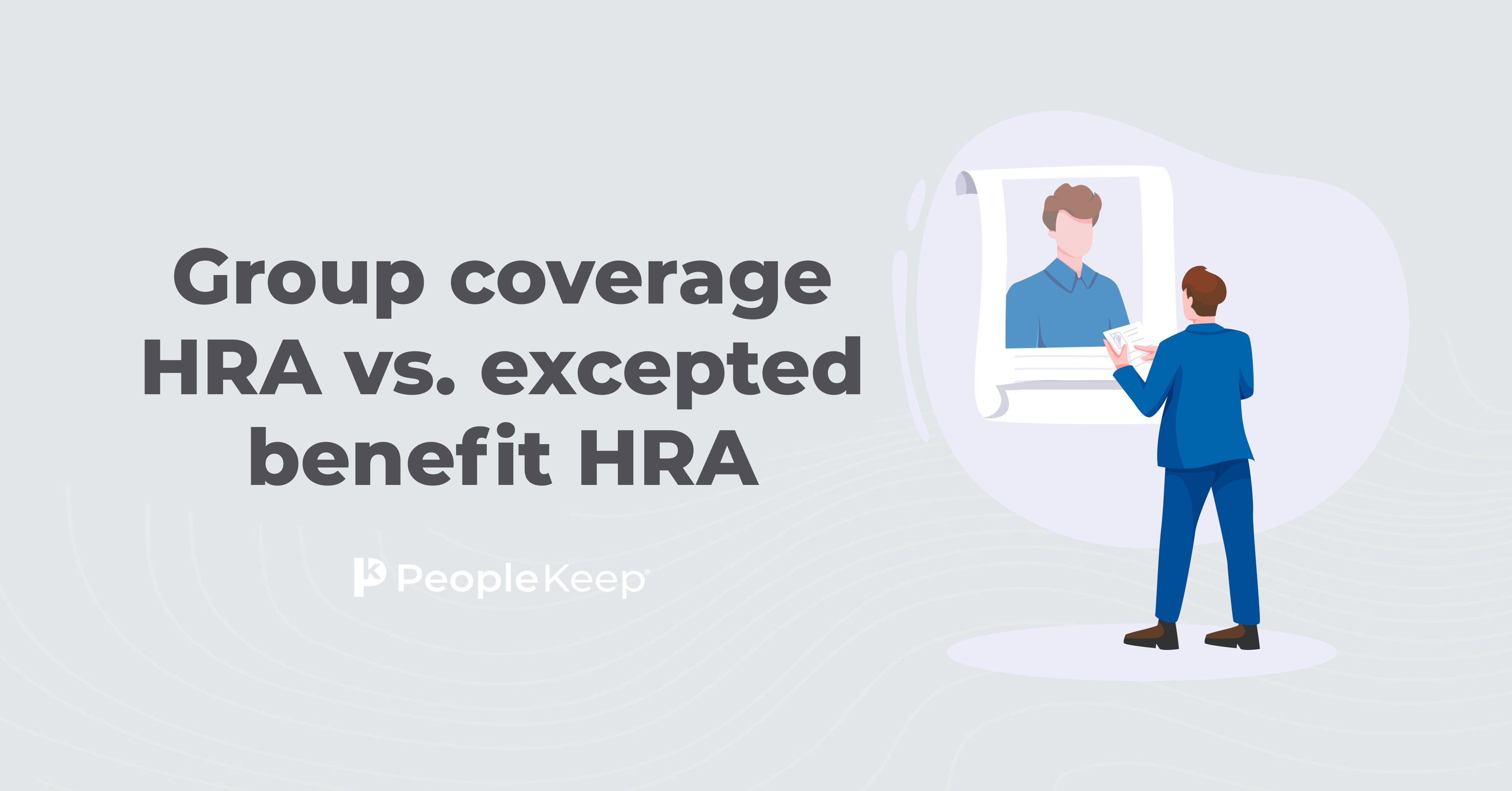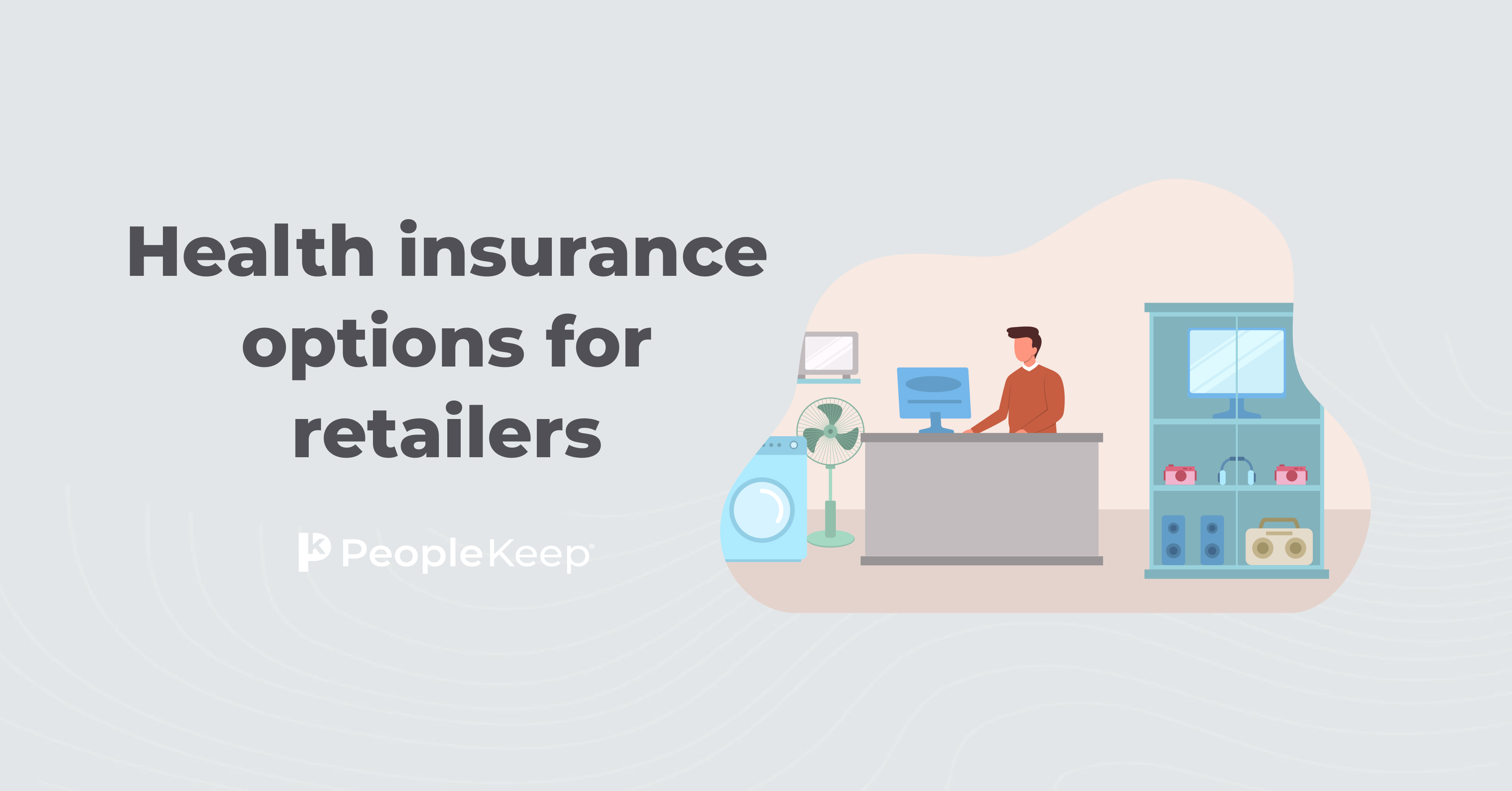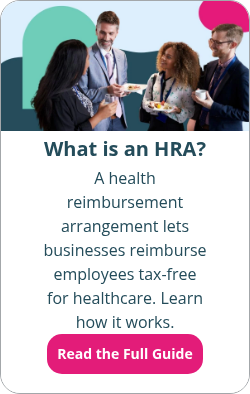Are HRAs subject to Medicare Secondary Payer (MSP) requirements?
By Holly Bengfort on July 25, 2024 at 1:03 PM
The number of Americans enrolled in Medicare, largely those with disabilities and older adults, is growing steadily as the population ages. The Centers for Medicare & Medicaid Services1 (CMS) projects that 75 million Americans will have Medicare coverage by 2028.
As an employer, you must follow unique rules to coordinate coverage like Medicare and health reimbursement arrangements (HRAs), such as Medicare Secondary Payer (MSP) reporting requirements. If you have employees who are on Medicare and are participating in an HRA, you need to ensure you're coordinating and reporting the two benefits correctly.
In this article, we'll go over what it takes to stay compliant.
Takeaways from this blog post:
- HRAs provide a cost-effective option compared to standard group health insurance plans and offer tax-free reimbursements for employees' expenses.
- Medicare Secondary Payer (MSP) reporting requirements apply to all HRAs, including QSEHRA, ICHRA, and GCHRA, to determine primary payer responsibility.
- Employers subject to MSP reporting requirements must complete an MSP input file to report HRA coverage and employee enrollment in Medicare, ensuring compliance with regulations and proper coordination of benefits.
What is an HRA?
HRAs are cost-effective alternatives to traditional group health insurance plans. According to KFF2, in 2023, annual employer-sponsored health insurance premiums averaged $8,435 for single coverage and $23,968 for family coverage. Most business owners can't keep up with these prices, especially when you factor in the annual rate hikes and steep participation requirements that come with group insurance plans.
Instead of purchasing an expensive group plan from a health insurance company, employers can offer their employees an HRA. An HRA is an employer-funded health benefit. It allows employers to reimburse employees tax-free for their out-of-pocket expenses and health insurance premiums, depending on the type of HRA.
Employers offer their employees a monthly allowance for their healthcare costs. Employees then purchase their own health insurance policies and medical services using their own money. From there, they submit proof of their out-of-pocket expenses to their employer or HRA administrator for reimbursement. Once the employer or administrator approves the eligible medical expense, the employer reimburses the employee up to their allowance amount.
What is Medicare Secondary Payer (MSP)?
Back when Congress created Medicare in 1966, many eligible Americans used it as a primary insurance option—that meant Medicare was the primary payer for all of its beneficiaries' insurance claims.
However, by 1980, the U.S. Congress passed legislation making Medicare the secondary payer to certain primary plans as a way to shift costs from Medicare to other insurance carriers and private sources of payment.
This legislation created the MSP reporting requirements to protect Medicare Trust Funds and ensure that Medicare doesn't pay for items and medical services that other health plan coverage is primarily responsible for paying.
While Medicare can be the primary payer for claims made by beneficiaries without other kinds of health coverage, the MSP rules apply to situations when Medicare isn't the beneficiary's primary health insurance coverage.
Do MSP reporting requirements apply to HRAs?
The MSP reporting requirements help CMS determine whether a plan is primary to Medicare, or in other words, if a health plan pays first and Medicare is the secondary payer.
These rules apply to all “group health plans,” as defined by the MSP statute. All HRAs, including the qualified small employer HRA (QSEHRA), the individual coverage HRA (ICHRA), and the group coverage HRA (GCHRA) are considered employer group health plans and are therefore subject to MSP reporting requirements3.
Are there any exceptions to the MSP reporting requirements?
If you're an employer that offers an HRA to an employee who's enrolled in Medicare, you might still be off the hook when it comes to MSP reporting requirements. There are a couple of exceptions when it comes to which organizations are subject to MSP based on their size and the HRA allowance amount they offer.
Organizations with fewer than 20 employees
Medicare automatically assumes primary payment responsibility for elderly employees of organizations with fewer than 20 employees4. So if you're a small employer offering a QSEHRA or ICHRA to only a handful of employees, you wouldn't need to be included for MSP reporting.
This means that for your employees who are enrolled in Medicare, their claims would first be covered through their Medicare plan and then through their QSEHRA or ICHRA as a secondary payer.
HRAs with less than $5,000 of annual coverage
Your organization is also exempt from MSP reporting requirements if the annual allowance you offer through an HRA is less than $5,000 a person.
For example, let's say you have an employee who’s enrolled in Medicare and also participates in your ICHRA benefit. As long as their monthly allowance is less than $416 (roughly $5,000 a year), then you don't need to worry about MSP reporting.
Here’s a summary of the different Medicare situations you and your employees may experience:
|
Individual is age 65 or older |
Individual has a disability |
|
|
The organization has fewer than 20 employees |
Medicare pays primary, and HRA pays secondary. |
Medicare pays primary, and HRA pays secondary. |
|
The organization has 20 or more employees |
HRA pays primary, and Medicare pays secondary. |
|
|
The organization has 100 or more employees |
HRA pays primary, and Medicare pays secondary. |
What do employers have to do under MSP rules?
As an employer that's subject to MSP reporting requirements, you're simply responsible for completing an MSP input file5 to stay compliant.
In the MSP input file, you'll report the information about your HRA coverage and your employees who are enrolled in Medicare to help identify whether your health plan is, or has been, a primary plan to Medicare.
Here's what you'll report on your MSP input file:
- Names of employees to whom the MSP requirement applies.
- Social security numbers of employees to whom the MSP requirement applies.
- Information about your health coverage.
- Insurance type.
- Effective date: this should be the plan’s start date.
- Policy number.
In addition, you'll also need to ensure that your plan provides for proper primary payments, as well as ensure that your plan doesn't discriminate against disabled employees or employees and their spouses who are 65 or over.
You’ll report HRA coverage by inputting “R” in the coverage type field of the Input File. If your HRA provides reimbursement for prescription drugs, you’ll need to submit another record with code “Z.”
If you offer a GCHRA, you’ll need to submit two records—one for your group health plan and another for the HRA.
Helpful tips for your employees
Your employees with Medicare and an HRA need to grasp how these benefits complement each other for a smooth healthcare experience. This is where coordination of benefits6 (COB) comes into play. COB is a system that helps prevent overpayment and ensures they get the correct level of coverage. It avoids multiple insurers paying more than they have to for their medical care and that your employees receive their entitled healthcare benefits without any confusion.
Here are some guidelines on how they can coordinate benefits:
- They should always provide accurate insurance information to their healthcare providers. This helps ensure correct billing.
- They should let both their primary insurer and secondary insurer know about their multiple sources of coverage. This helps them coordinate benefits efficiently.
- Healthcare providers should initially submit claims to the primary payer. After receiving the payment, they can forward the remaining balance to the secondary payer for coordination.
Conclusion
HRAs are a great way for your employees enrolled in Medicare to get the supplemental coverage they need to pay for their out-of-pocket medical expenses. By following these simple guidelines, you can confidently coordinate the two benefits for your employees while also staying compliant.
- https://www.cms.gov/files/document/nhe-projections-2019-2028-forecast-summary.pdf
- https://www.kff.org/report-section/ehbs-2023-summary-of-finding
- https://www.cms.gov/medicare/coordination-of-benefits-and-recovery/mandatory-insurer-reporting-for-group-health-plans/ghp-training-material/downloads/health-reimbursement-arrangement-hra.pdf
- https://www.cms.gov/medicare/coordination-benefits-recovery/overview/secondary-payer
- https://www.cms.gov/Medicare/Coordination-of-Benefits-and-Recovery/Mandatory-Insurer-Reporting-For-Group-Health-Plans/GHP-Training-Material/Downloads/MSP-Input-File-Requirements-Overview.pdf
- https://www.ehealthinsurance.com/medicare/parts/medicare-as-a-secondary-payer
Check out more resources
See these related articles

Group coverage HRA vs. excepted benefit HRA
Get a side-by-side comparison of group coverage HRAs and excepted benefit HRAs so you can know which one is best to supplement your group health plan.

Health insurance options for retailers
Looking for health insurance options for your retail business? Explore the best health insurance plans tailored for retailers in this informative guide.

Minimum contribution requirements: Group health insurance vs. HRAs
Confused about employer contribution rules for health insurance and HRAs? This article breaks down the minimum requirements to help you navigate your options.



